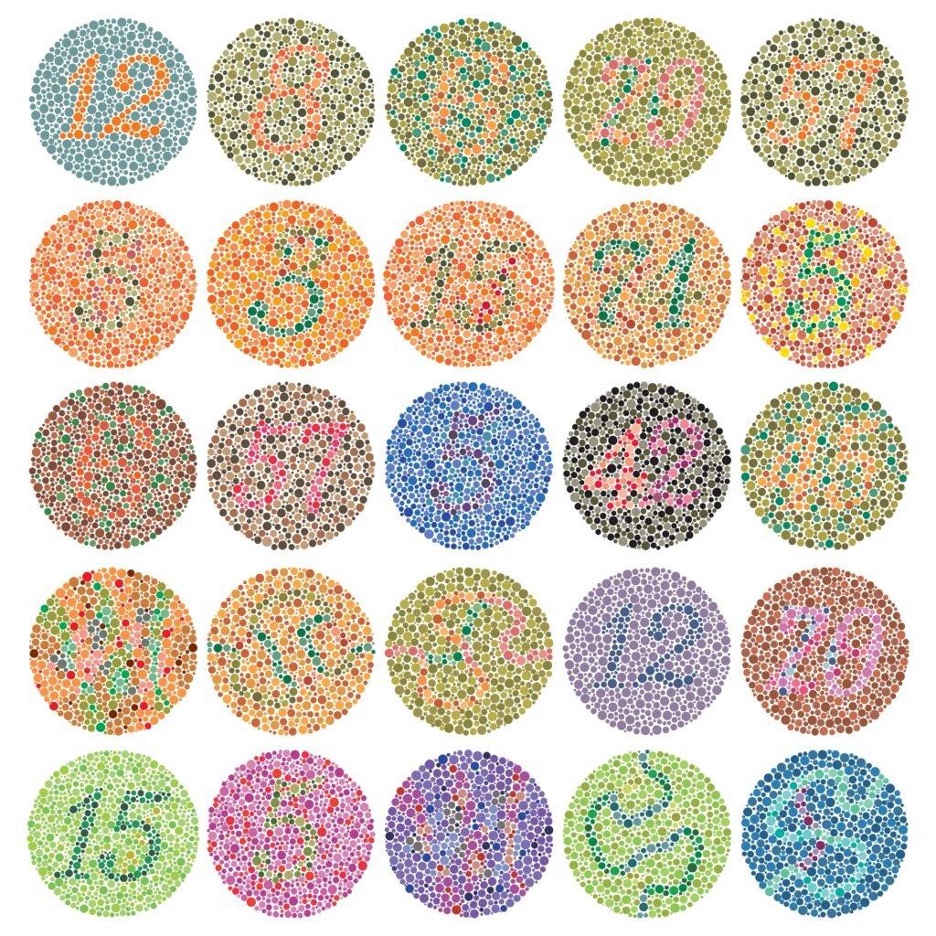Colour blindness and Colour blind tests
There is a saying that goes, “Colours are the smile of nature.” Yet, not everyone sees the world in the same colours as you do. It might be colour blindness causing this, resulting in perception of the world in different colours from other people. This article explores what is colour blindness and what are the different types of colour blind tests available.
Let us first understand colour vision to understand colour blindness.
What is colour vision?
When light from the surroundings enters your eye, it is concentrated onto the retina (the layer at the back of your eye containing millions of tiny light-sensitive cells called photoreceptors). When light comes into contact with photoreceptors, these cells transmit information in the form of an electrical signal along your optic nerve (cable sending visual messages) to your brain.
There are two types of photoreceptors, rods and cones. Rods are for peripheral, dim and night vision. Cones allow colour vision and enable you to see detail in the central part of your vision. Cones are located mostly in the centre of the retina.
Human eyes have three types of cones for colour vision; blue, green and red. These three types of cones have varied responses to different colours of light according to the type of pigment they contain. When different wavelengths of light activating the different types of cones combine, you are most likely to see and differentiate among many distinct colours.
When cones do not contain one or more of the typical pigments or if there is a genetic mutation in a pigment that impedes its function, the cones cannot be stimulated by certain wavelengths of light. This results in colour blindness or colour vision deficiency (the inability to distinguish between or perceive certain colours).
What are the different types of colour blindness and colour vision deficiencies?
There are different types of colour blindness and colour vision deficiencies, categorised by its cause. They can occur as a result of genetic causes or eye diseases such as macular degeneration or diabetic retinopathy.
The majority of people with colour blindness or colour vision deficiencies can see certain colours but have a harder time differentiating between colours, based on how dark or light a colour is. Complete colour blindness, also called achromatopsia, whereby people can only see things as black and white or in shades of grey, also exists.
What are some colour blind tests used to detect colour blindness or deficiency?
The Ishihara test is the most common type of colour vision test doctors use. It serves as a screening tool to identify the presence of a colour vision deficiency or blindness. The test plates contain dots of different colours. There usually would be a number on each test plate, also called pseudoisochromatic colour plates.

During the test, your eye doctor will instruct you to identify what you see on each page. If you have colour blindness or colour vision deficiencies, you may not be able to detect any number or pattern on a page.
Another test that uses pseudoisochromatic colour plates is the Hardy, Rand, and Rittler (HRR) test. The test is similar to the Ishihara test, however, the Ishihara test only detects red-green deficiencies while the HRR test can also detect blue-yellow color vision deficiencies or blindness.

Nonetheless, both of these tests have limitations and do not pick up on subtle colour vision deficiencies. Your eye doctor may conduct additional colour vision tests, called arrangement tests.

A more detailed test than pseudoisochromatic colour tests is an arrangement test, called the Farnsworth-Munsell 100-hue test. This test requires you to assemble various coloured discs in a particular sequence, based on the colour and intensity of the color. Your eye doctor can assess the quality of your colour vision ability based on mistakes you make in the arrangement.
Book your eye check up via planoEyecheck to detect any signs of colour blindness or deficiencies.
References
[1] Visioncenter.org. 2021. “3 Types of Color Blindness (Symptoms, Tests & Treatments).” [online] Available at: <https://www.visioncenter.org/conditions/color-blindness/>
[Accessed 22 December 2021].
[2] Plano. 2021. “What is colour blindness? | Plano | Save sight. Empower lives.” [online] Available at: <https://plano.co/eye-health/colour-blindness/>
[Accessed 22 December 2021].
Tools Designed for Healthier Eyes
Explore our specifically designed products and services backed by eye health professionals to help keep your children safe online and their eyes healthy.
